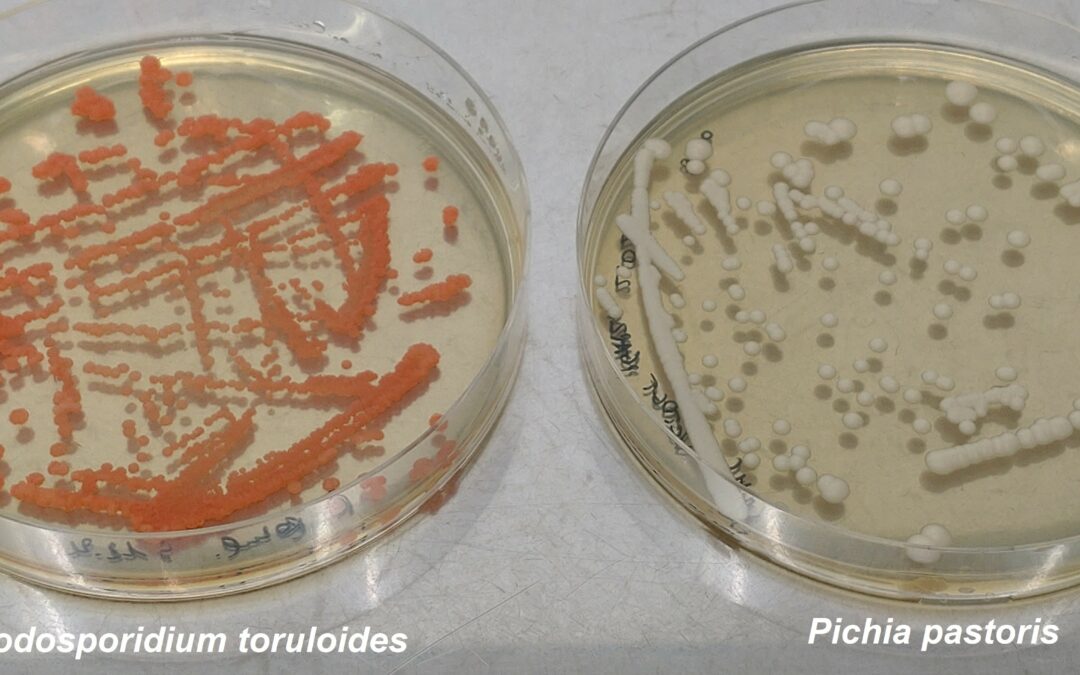Kaia Kukk
Postdoctoral researcher at Latvian Biomedical Research and Study Centre
For most people the word “yeast” associates with the baker’s or brewer’s yeast (Saccharomyces cerevisiae) that is used for rising dough and brewing beer. However, there are several “non-conventional” yeasts, showing distinct colours that varies from yellowish brown to pinkish and orange, and having characteristic scent, some recalling bakery or diary, the others beer or having their own specific yeast smell. Non-conventional yeasts are for example Komagataella phaffii (Pichia pastoris), Rhodosporidium toruloides, Kluyveromyces marxianus, Yarrowia lipolytica and Ogataea polymorpha (Hansenula polymorpha). If you are wondering why two names have been brought out for some yeasts, then this is because these yeasts have been split into several species or re-classified after getting new data from genome sequencing.
Among these yeasts, K. phaffii and O. polymorpha are methylotrophic yeasts, which means they are able to use methanol as a source of energy. O. polymorpha and K. marxianus are thermotolerant yeasts that are able to grow at 50 and 40 °C, respectively. R. toruloides naturally accumulates lipids and carotenoids, which give this yeast its characteristic orange-red colouration. These non-conventional yeasts are mostly used by scientific community and pharmaceutical industry for producing valuable chemicals and heterologous proteins (proteins from another organism, such as human, a plant etc.). In Latvian Biomedical Research and Study Centre, for example, the yeast K. phaffii is used for producing virus like particles1. One of the hot topics at the present time is using non-conventional yeasts as cell factories for producing desired chemicals from waste or by-products. At Tallinn University of Technology, R. toruloides was tested among other non-conventional yeasts for its ability to grow on lignocellulosic hydrolysate, and performed the best2.
As part of the project “Optimization of novel plant derived enzyme expression in microorganisms for biotechnological application” (project no. 1.1.1.2/VIAA/2/18/286) the suitability of the non-conventional yeasts K. phaffii, K. marxianus and R. toruloides for the production of enzymes that participate in the synthesis of plant pigments called anthocyanins is tested with the aim of future application in developing blue coloured food dyes. This work is supported by the European Regional Development Fund and is carried out at Latvian Biomedical Research and Study Centre in co-operation with the Department of Chemistry and Biotechnology of Tallinn University of Technology.
1 https://doi.org/10.1007/s00449-022-02754-4
2 https://doi.org/10.3389%2Ffbioe.2021.659472



